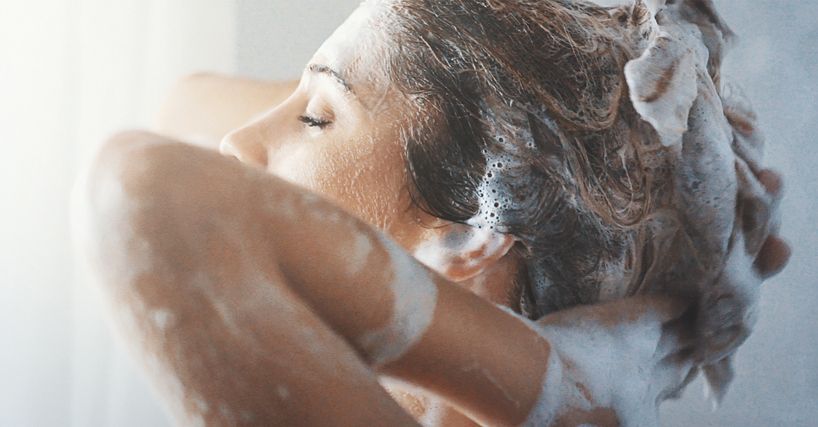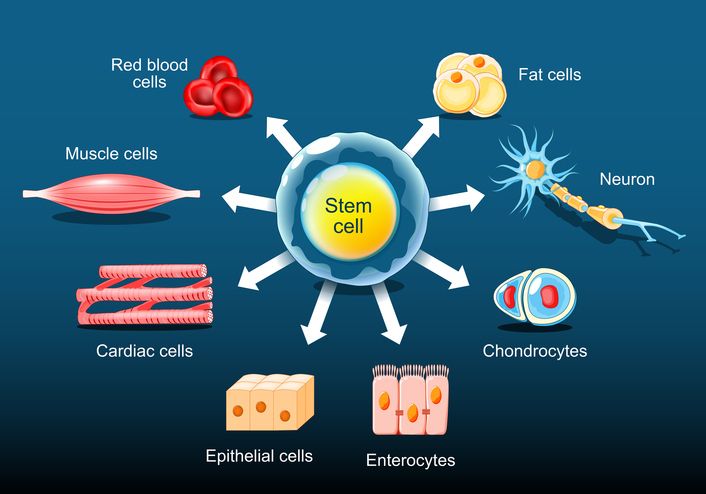Author: Natalie Ng|Updated: 23 May 2025
LED light therapy offers a powerful way to reduce acne and support skin health naturally. This treatment uses gentle wavelengths like blue light and red light, which work together to calm irritation, reduce acne-causing bacteria, and prevent future breakouts. Unlike harsh medications or abrasive treatments, LED light therapy is safe, non-invasive, and suitable for most skin types, including mild to moderate acne and acne-prone skin. It also helps reduce inflammation, ease redness, and prevent acne scarring. You can combine LED light therapy with your current skincare routine for better results—without worrying about side effects like dryness or peeling. Curious how light therapy can help treat acne and improve your skin’s appearance? Keep reading to discover the key benefits of this simple and effective acne treatment.

LED Light Therapy for Acne: How It Fits Into Your Treatment Routine
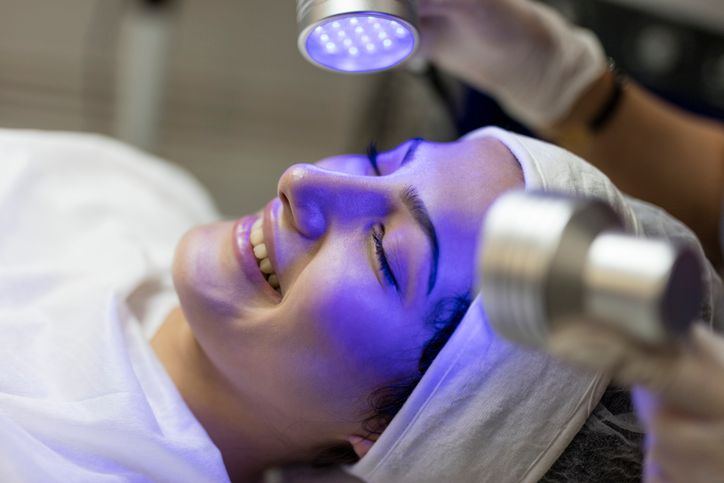
Why acne happens
Acne forms when hair follicles get clogged with oil, dead skin cells, and acne-causing bacteria like Cutibacterium acnes. This buildup creates the perfect environment for pimples, blackheads, and whiteheads to form. Several factors can increase the chance of breakouts:
• Overactive oil glands producing too much sebum
• Dead skin cells that block pores
• Bacteria that trigger inflammation and infection
• Hormonal changes that affect oil levels, like during puberty or stress
• Lifestyle factors, like diet or high stress, that may make acne worse
Common acne treatments
Managing acne often involves a combination of treatments:
• Topical medications like benzoyl peroxide and salicylic acid help reduce oil and bacteria
• Oral medications like antibiotics or hormonal treatments are used for more severe acne
• Chemical peels remove dead skin and help fade acne scars
• Laser treatments and other light-based therapies target bacteria and improve skin health
Why add LED light therapy to your acne treatment plan
LED light therapy is a non-invasive option that works alongside traditional acne treatments. Blue light therapy targets the bacteria deep inside pores, while red light therapy reduces inflammation and supports healing. This combination helps manage active acne and prevent future breakouts, all without harsh chemicals or downtime.
Adding LED light therapy to your acne routine can help:
• Reduce acne-causing bacteria and inflammation
• Support the skin’s natural healing process
• Improve the appearance of acne-prone skin over time

Struggling With Acne-Prone Skin ? Integrate LED Light Therapy into Your Skincare Routine
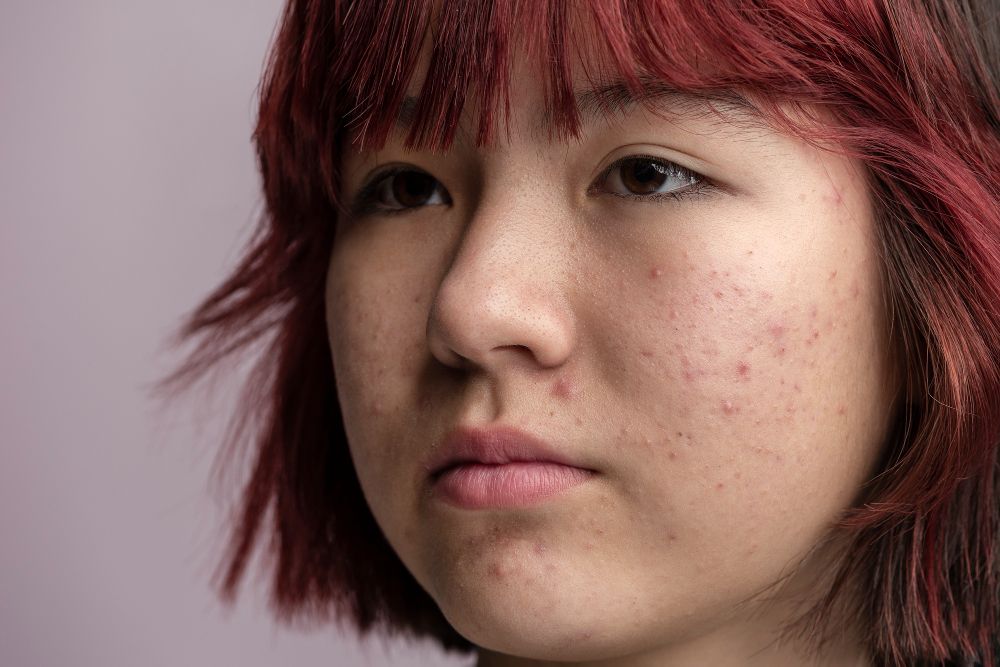
The Importance of a Comprehensive Skincare Routine
Managing acne effectively requires more than a single treatment; it involves a skincare routine that addresses various factors contributing to breakouts. For acne-prone skin, LED light therapy can enhance target specific skin concerns. The effectiveness of LED light therapy can also depend on your skin type, as treatment parameters such as wavelengths and device settings may be tailored to different skin types to optimize results and minimize adverse effects.
How LED Light Therapy Enhances Acne Treatment
LED light therapy utilizes specific wavelengths of light to address acne-related issues:
• Blue Light Therapy: Targets and reduces Cutibacterium acnes bacteria on the skin’s surface, helping to prevent new breakouts.
• Red Light Therapy: Penetrates deeper into the skin to reduce inflammation and promote healing, which can diminish the appearance of existing acne lesions. Red light therapy is also known for its anti inflammatory benefits, making it especially effective for acne-prone skin by reducing redness and swelling.
By integrating LED light therapy into your skincare routine, you can address both the bacterial and inflammatory aspects of acne, leading to clearer skin over time.
Building an Effective Skincare Routine with LED Light Therapy
To maximize the benefits of LED light therapy, consider the following steps in your skincare regimen:
1. Gentle Cleansing: Use a mild, non-comedogenic cleanser to remove dirt, oil, and makeup without irritating the skin.
2. Topical Treatments: Apply acne-fighting ingredients such as benzoyl peroxide or salicylic acid to target active breakouts.
3. LED Light Therapy: Utilize your LED device as directed, typically for 10-20 minutes per session, to reduce bacteria and inflammation.
4. Moisturizing: Hydrate the skin with a non-comedogenic moisturizer to maintain the skin barrier and prevent dryness.
5. Sun Protection: Apply a broad-spectrum sunscreen daily to protect the skin from UV damage, which can exacerbate acne and cause hyperpigmentation.
Book Now to Experience
Acne Treatment
1 Minute Self-Registration
Date should not be before minimal date

LED Light Therapy Benefit 1: Targets Acne-Causing Bacteria Without Harsh Chemicals
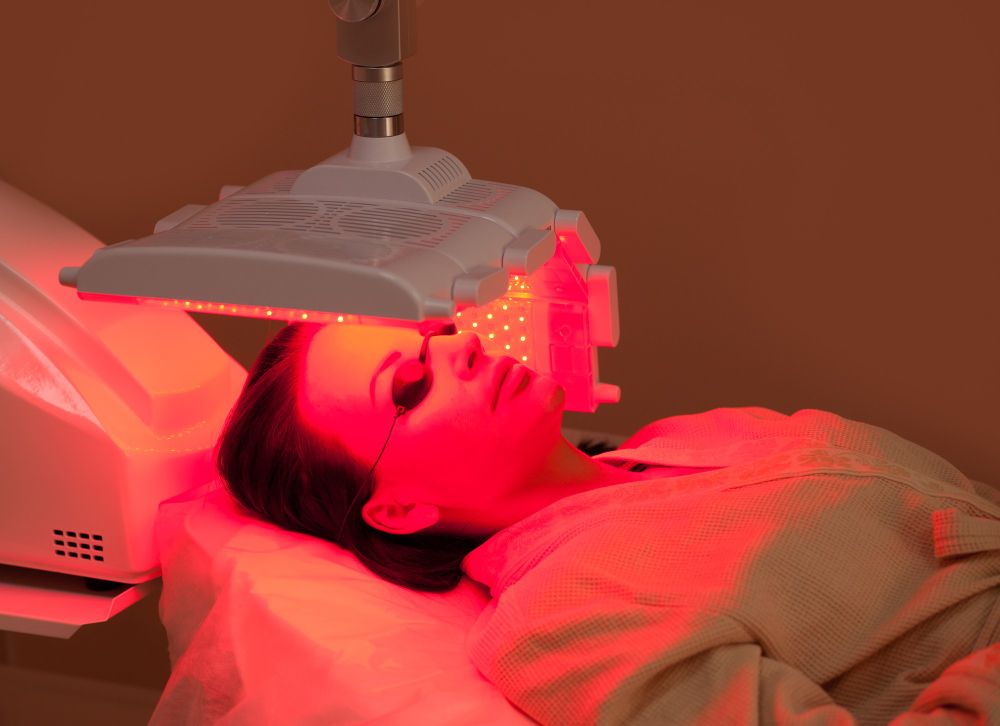
Blue light therapy reduces acne-causing bacteria
Blue light therapy works by targeting acne-causing bacteria (Cutibacterium acnes) that build up inside clogged pores. When exposed to blue light wavelengths, these bacteria undergo a chemical reaction that helps break down their cell walls, reducing bacterial growth and preventing future breakouts.
A blue light device delivers this specific wavelength directly to the skin, making it an effective and convenient option for targeting P. acnes bacteria and supporting self-treatment of mild to moderate acne.
Red light therapy supports skin healing
Red light therapy complements blue light by reducing inflammation and encouraging skin repair. Red light promotes better blood flow and helps deliver oxygen and nutrients to skin cells, supporting a stronger skin barrier and reducing redness. Additionally, red light therapy supports wound healing by accelerating tissue repair, which can aid in the recovery of acne-affected skin.
Combining blue and red light therapy helps prevent new breakouts
Using both blue and red light therapy together creates a balanced approach to treating mild to moderate acne. Blue light targets bacteria, while red light soothes irritation and supports long-term skin health. This combination can help clear acne by reducing lesions such as comedones and pustules, leading to improved skin clarity. Light therapy devices are designed to deliver these wavelengths effectively, helping to reduce active acne and lower the risk of new breakouts.
LED light therapy is safe for most skin types and can be used alongside acne treatments like benzoyl peroxide or salicylic acid for even better results.

LED Light Therapy Benefit 2: Reduces Inflammation and Redness in Acne-Prone Skin
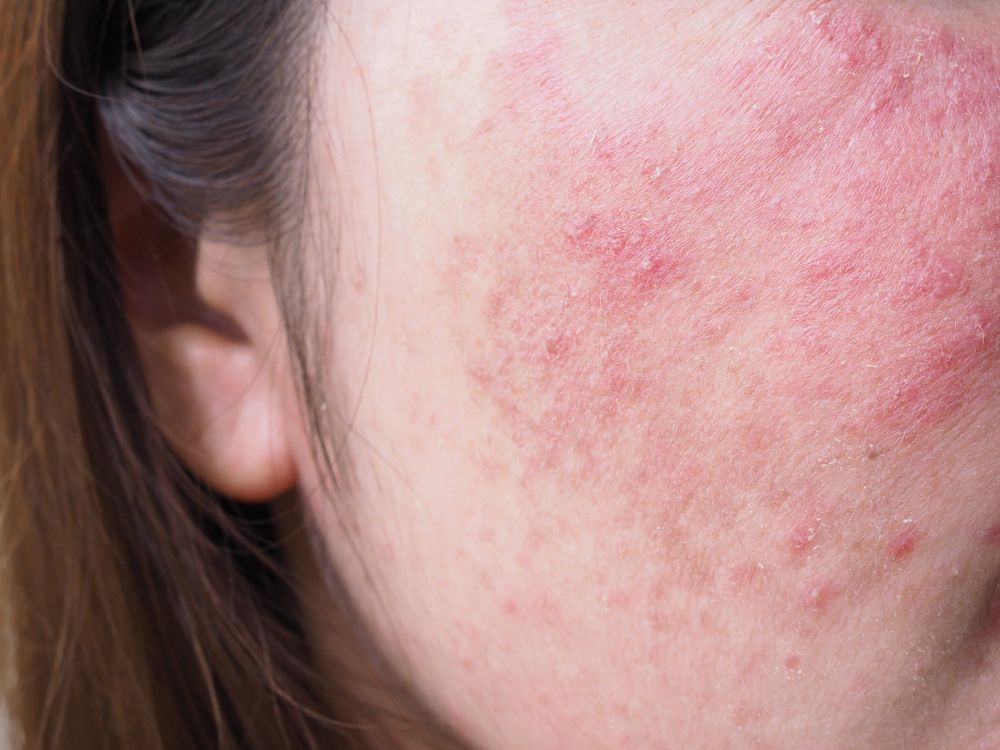
Red light therapy helps reduce skin inflammation
Red light therapy uses gentle, visible light wavelengths to calm inflamed skin. It works by improving blood flow, which helps your body deliver oxygen and nutrients to areas of irritation. This process can ease redness, swelling, and discomfort often caused by inflammatory acne lesions.
Blue and red light work together to support clearer skin
While red light therapy helps reduce redness and soothe irritated skin, blue light therapy targets acne-causing bacteria deep within the pores. The combination of red and blue light therapy helps manage active acne, promote healing, and prevent new breakouts.
Regular light therapy can improve skin health
Using a light therapy device for 10-15 minutes per session, several times per week, can support skin recovery and reduce the appearance of redness over time. Many users with mild to moderate acne notice improvements in skin sensitivity, skin appearance, and overall skin health. Regular use of LED light therapy can enhance the skin's appearance by reducing redness and improving the overall look of the skin.
These devices are also effective at targeting existing blemishes, helping to reduce their visibility and prevent future outbreaks.
LED light therapy provides a gentle, non-invasive way to manage inflammation and redness without using harsh chemicals or medications.
Book Now to Experience
Acne Treatment
1 Minute Self-Registration
Date should not be before minimal date

LED Light Therapy Benefit 3: Supports Skin Healing and Repair
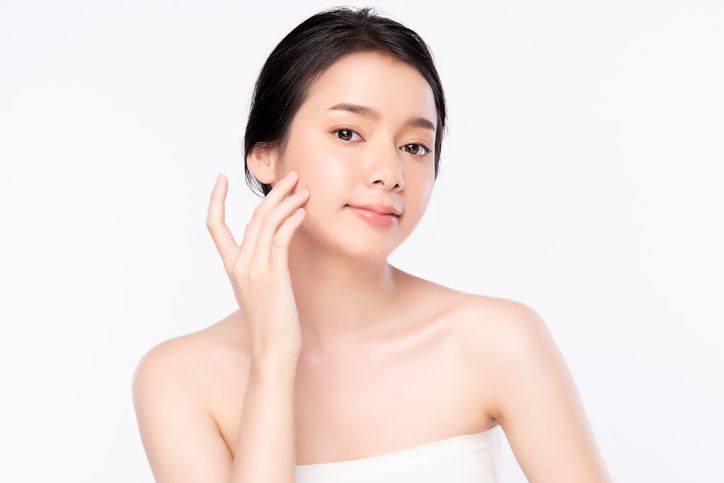
How red light therapy promotes natural skin healing
Red light therapy stimulates blood flow, delivering oxygen and nutrients to damaged skin areas. This helps repair the skin barrier, reduce inflammation, and speed up the body’s natural healing process. By improving circulation, red light therapy supports the skin’s ability to recover from breakouts, making it a valuable addition for acne-prone skin.
How light therapy enhances skin’s repair process
LED light therapy also stimulates collagen production deep within the skin. Collagen helps repair damaged tissues, smooth out uneven skin texture, and improve the appearance of acne lesions and scars. This benefit makes light therapy a useful tool for supporting long-term skin health.
Light therapy boosts skin cell energy
By increasing cellular energy, red and near-infrared light wavelengths help skin cells work more efficiently. This energy boost encourages skin regeneration and helps maintain a healthy, balanced complexion over time.
LED therapy works with the skin’s natural processes, helping it heal after breakouts and reducing the risk of long-term damage.

LED Light Therapy Benefit 4: Helps Prevent Future Breakouts
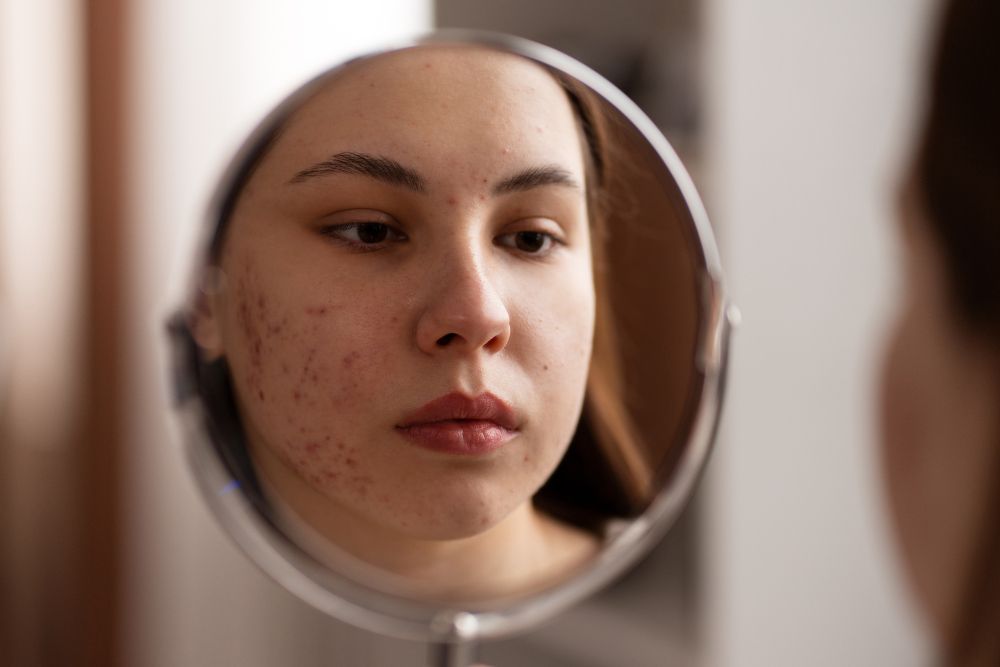
How light therapy stops breakouts before they start
LED light therapy helps prevent acne breakouts by targeting both the bacteria that cause acne and the skin conditions that allow it to thrive. Blue light wavelengths penetrate deep into the pores, where they break down Cuti Bacterium acnes bacteria. By reducing this bacteria, blue light helps stop new acne lesions from forming.
At the same time, red light therapy calms inflammation and regulates oil production. Red light supports the skin’s natural healing process, while also lowering the risk of clogged pores, which are often the starting point for acne breakouts.
Benefits of regular light therapy treatments
Consistent use of light therapy devices—usually 2-3 times per week for 10-20 minutes per session—helps maintain these effects. With regular treatments, the skin becomes less reactive, and acne-prone areas stay clearer. People who use LED light therapy regularly often see a reduction in the frequency and severity of breakouts, even in areas with persistent acne.
By keeping bacterial levels low and oil production balanced, light therapy offers a gentle, natural method for reducing breakouts over time.
Book Now to Experience
Acne Treatment
1 Minute Self-Registration
Date should not be before minimal date

LED Light Therapy Benefit 5: Reduces Oil Production in Acne-Prone Skin
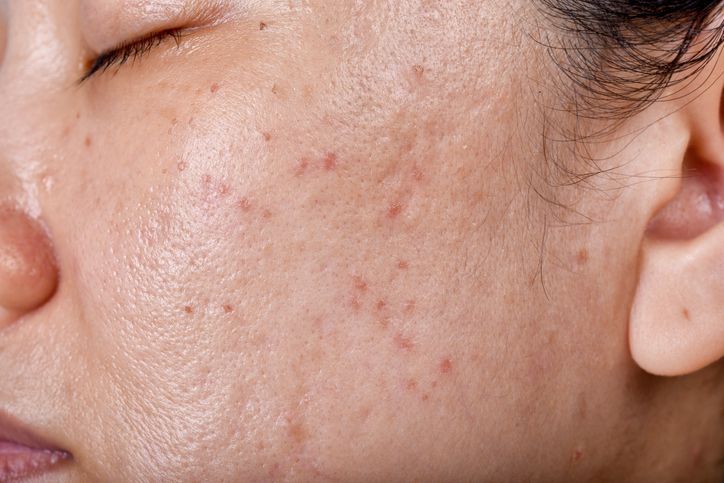
How light therapy helps balance skin’s oil levels
Excess oil, also called sebum, is a common cause of acne. LED light therapy helps manage oil production by using specific wavelengths that target the sebaceous glands. Red and blue light therapy work together to reduce oil buildup, which lowers the risk of clogged pores and breakouts.
Blue light therapy focuses on killing acne-causing bacteria and reducing the buildup of sebum within pores. Red light therapy calms inflamed skin and supports overall balance. Some devices also use green light to help stabilize oil production and create a healthier skin environment.
Results from regular light therapy sessions
Many people with mild to moderate acne notice less oiliness after a few sessions of LED therapy. With regular use—usually 2-3 times per week for 10-20 minutes—skin often becomes less shiny, pores stay clearer, and acne breakouts reduce over time.
LED therapy helps regulate oil production without drying out the skin, making it a gentle alternative to harsh topical products that can cause irritation or flaking.

LED Light Therapy Benefit 6: Safe for All Skin Types and No Downtime
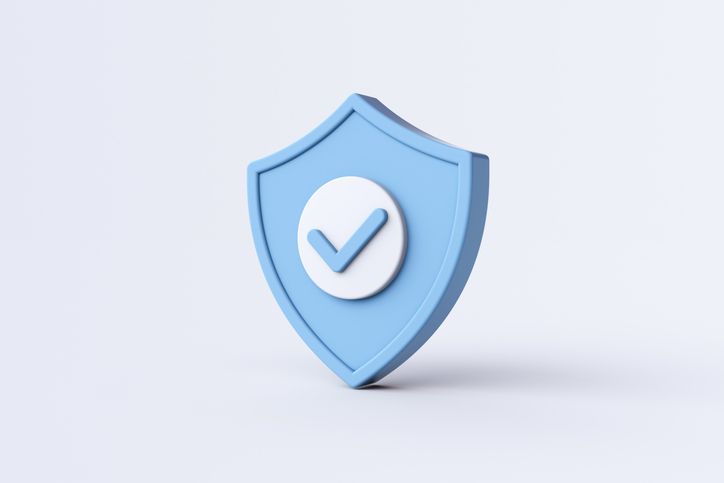
Why light therapy is safe for acne-prone skin
LED light therapy is a non-invasive treatment that works without damaging the skin’s surface. It uses visible light wavelengths—like blue light and red light—that are gentle on the skin. This makes LED light therapy safe for various skin types, including sensitive skin and acne-prone skin.
How to use LED light therapy safely
Although LED therapy is generally safe, it’s important to follow proper usage guidelines:
• Perform a patch test before using a new light therapy device
• Follow the recommended session time (usually 10-20 minutes)
• Use eye protection during treatments to avoid light exposure to the eyes
• Avoid using light therapy if you are taking medications that increase light sensitivity, such as some antibiotics or retinoids—consult a healthcare provider or board certified dermatologist if unsure
Benefits of light therapy for busy schedules
LED therapy does not require any downtime. Unlike some acne treatments, there’s no risk of peeling, irritation, or scarring after use. You can return to your usual skincare routine and daily activities immediately after each session.
This makes light therapy a convenient option for those with mild to moderate acne who want a safe treatment that doesn’t disrupt their day.
Book Now to Experience
Acne Treatment
1 Minute Self-Registration
Date should not be before minimal date

LED therapy may not be the best for treating scars?

LED light therapy is often promoted for reducing acne scarring and dark spots, but research shows limited evidence to support this. While red light therapy can help reduce inflammation and support collagen production, it may not be strong enough to fade deeper scars or dark spots on its own.
For more advanced treatment of acne scars and active acne, laser therapy and photodynamic therapy are alternative light-based options that have shown therapeutic effectiveness in dermatology. Other light treatments, such as those combining different wavelengths like blue and red light, may also be considered for more severe cases.
Proven treatments for acne scars and dark spots
If you want to treat acne scarring or hyperpigmentation, focus on methods with stronger scientific backing. These include:
• Retinoids to boost cell turnover
• Vitamin C serums for brightening and reducing dark spots
• Chemical peels to exfoliate and renew skin
• Microneedling or laser treatments for deeper scars
Why LED therapy is still useful for preventing future scars
Although LED therapy may not dramatically fade existing scars, it can help prevent new scars from forming by reducing active acne and calming inflammation. This makes it a helpful addition to an acne-fighting routine, but not a primary solution for treating acne scarring.

Combine The Acne Treatment With LED Light Therapy To Fight Acne
LED light therapy is an effective option for managing acne. It helps reduce acne-causing bacteria, calms inflammation, and supports skin healing. But for people with acne-prone skin, clogged pores, and excess oil, adding a targeted acne treatment can make a big difference.
The Acne Treatment works alongside LED light therapy to cleanse the skin, remove buildup, and prevent new breakouts. This professional treatment uses dual spiral suction and drainage technology to deeply cleanse pores, remove dead skin cells, and calm active acne. It also infuses a hydrating serum to balance sebum production and boost collagen growth, helping skin look clearer and healthier over time.
How the Acne Treatment works with light therapy for acne
LED light therapy and the Acne Treatment work together as a complete system:
• LED light therapy reduces acne-causing bacteria and inflammation
• The Acne Treatment clears pores, hydrates skin, and supports collagen production
• Together, they improve skin’s appearance, reduce acne lesions, and prevent future breakouts
This combination is especially helpful for those with moderate acne, oily skin, or recurring breakouts. While light therapy targets inflammation and bacteria, the Acne Treatment helps clear clogged pores and balance oil levels, creating a stronger defense against acne.
If you’re looking for a non-invasive, gentle option to treat acne and improve skin health, combining LED light therapy with the Acne Treatment is a safe and effective solution.
Book your Acne Treatment free trial today and see how this combination can help you achieve clearer skin, fewer breakouts, and a more balanced complexion!
New Beauty's Acne Treatment
Important Considerations When Using LED Light Therapy for Acne
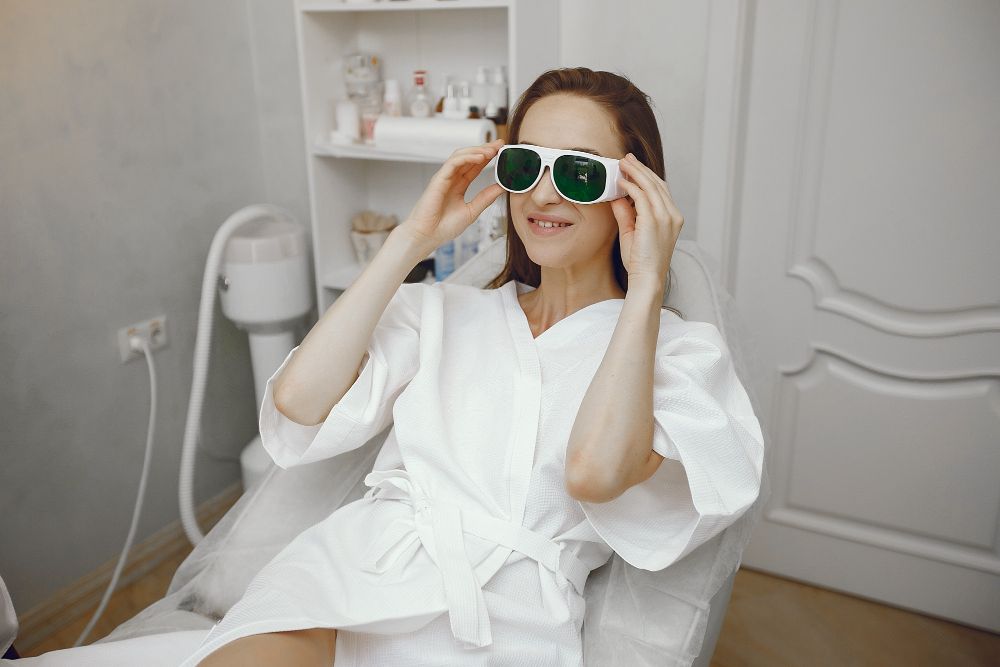
1. Use Protective Eyewear During Treatments
LED light therapy devices emit bright light that can be harmful to the eyes. Always wear protective goggles designed for LED treatments to shield your eyes from potential damage.
2. Consult a Healthcare Provider Before Starting
Before beginning LED light therapy, especially if you have underlying health conditions or are taking medications, consult with a healthcare provider. Certain medications, such as isotretinoin (Accutane), or conditions like photosensitivity disorders, may contraindicate the use of light therapy.
3. Follow Manufacturer's Instructions Carefully
Adhere strictly to the manufacturer's guidelines regarding session duration and frequency. Overuse can lead to skin irritation, redness, or dryness. Typically, sessions should last between 10 to 20 minutes, two to three times per week.
4. Perform a Patch Test Before Full Use
Before using the device on your entire face, conduct a patch test on a small area of skin to check for any adverse reactions. Wait 24 hours to ensure no irritation or allergic response occurs.
5. Maintain Proper Skin Care Post-Treatment
After each session, apply a gentle, non-comedogenic moisturizer to hydrate the skin and prevent dryness. Additionally, use a broad-spectrum sunscreen daily, as LED therapy can increase skin sensitivity to sunlight.
6. Avoid Use If You Have Certain Conditions
Individuals with a history of skin cancer, epilepsy, or those who are pregnant should avoid using LED light therapy unless advised otherwise by a healthcare professional.
Book Now to Experience
Acne Treatment
1 Minute Self-Registration
Date should not be before minimal date
FAQ
1. Can LED light therapy help with severe acne?
LED light therapy can be helpful for mild to moderate acne by reducing inflammation and targeting acne-causing bacteria. However, for severe acne, it’s often not enough as a standalone treatment. Severe acne, such as nodulocystic acne or acne vulgaris, may need stronger medical treatments like oral medications, prescription creams, or procedures recommended by a board certified dermatologist. While LED light therapy can support skin healing, it should be seen as part of a broader acne treatment plan, not the only solution for severe acne.
2. Can I use LED light therapy and chemical peels together for acne-prone skin?
Yes, you can combine LED light therapy with chemical peels, but it’s important to space out treatments and avoid using them on the same day. LED therapy can help reduce inflammation and support skin healing after a chemical peel. However, you should follow your healthcare provider’s advice or check with a dermatologist before combining treatments, especially if you have sensitive skin or are using products like retinoids or benzoyl peroxide.
3. How is LED light therapy different from intense pulsed light (IPL) treatments for acne?
LED light therapy uses specific wavelengths of visible light, such as blue and red light, to target acne-causing bacteria and reduce inflammation. It’s gentle, non-invasive, and safe for most skin types, including acne-prone skin. Intense pulsed light (IPL) is a more aggressive treatment that uses a broad spectrum of light to target pigmentation, redness, and acne lesions. While IPL can help treat acne, it carries a higher risk of irritation, redness, and downtime. LED light therapy is generally safer for regular use on sensitive or inflamed skin.
4. Can LED light therapy help reduce oil production in oily skin?
Yes, LED light therapy, especially when using red and blue light, can help regulate oil production in the skin. Blue light targets acne-causing bacteria and reduces the buildup of sebum in pores. Red light therapy helps calm inflammation and support healthy skin function. Regular use of an LED light therapy device can lead to improved skin balance, reduced oily shine, and fewer acne breakouts over time.
5. Is there a difference between at-home LED devices and professional LED light therapy treatments?
At-home LED devices for acne, such as LED masks or handheld tools, are typically lower in intensity than professional devices used in a dermatologist’s office or aesthetic clinic. Professional LED light therapy treatments are often performed in a dermatologist's office, where higher-intensity devices and expert supervision can provide enhanced results. While at-home devices can help manage mild to moderate acne when used regularly, professional treatments may deliver faster or stronger results, depending on the skin condition and device settings. It’s important to use at-home devices as directed and combine them with a consistent skincare routine to see the best results for acne-prone skin.
Recommended Articles
COPYRIGHT© NEW BEAUTY MANAGEMENT LIMITED 2025. ALL RIGHT RESERVED.

